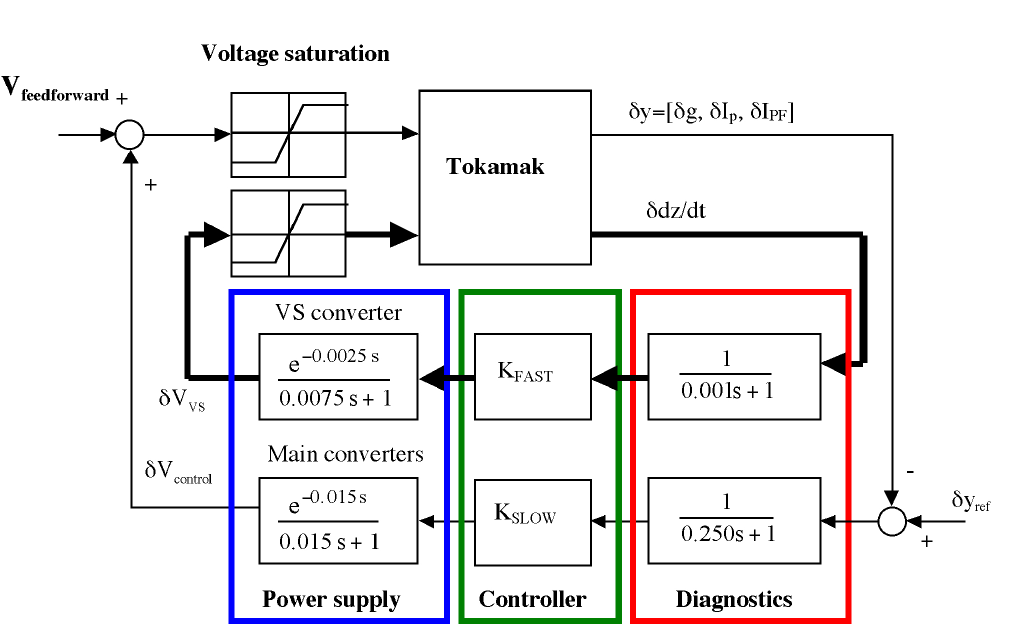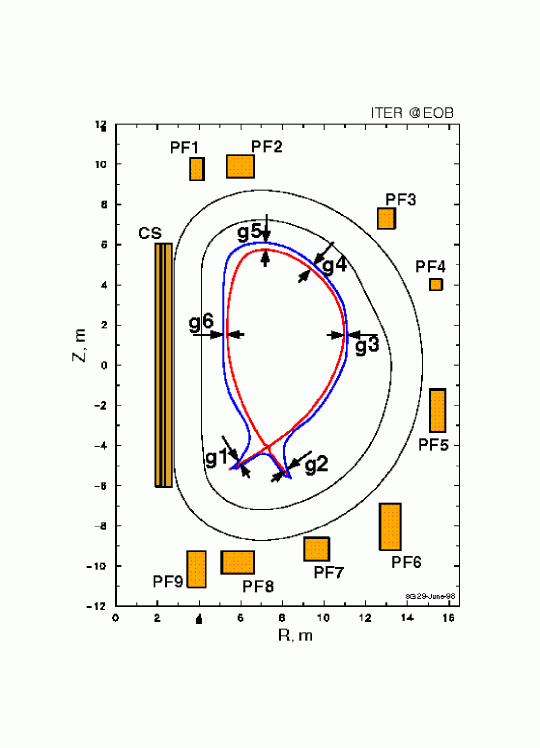
Decoupling control scheme.

Different techniques have been already explored in which power supplies constraints and disturbances have been taken into account. In particular, the PF coil currents and voltages should be within their design capabilities, and the requirements on the available control power should be met. Typical requirements regard the total control power and power derivative peaks, and the power steps, defined as the power variation occuring in the time interval in which the absolute value of the power derivative is higher than a given threshold.
Feedback controllers aim at maintaining the plasma in a given configuration (expressed in terms of the plasma current and a set of geometrical descriptors of the plasma shape -gaps, see figure at the side, reporting the ITER Elevation view and gaps location as in ITER FDR, 1998. ) in the face of disturbances. The controller has to be robust, so that it can compensate for model uncertainties.
Several control schemes have been investigated. In particular, the decoupling control scheme has been studied since it is the more likely to be used in the first period of ITER operation because it is of relatevely easy tuning. Decoupling control can be applied only to stable plasmas, therefore, vertical plasma stabilization has been designed and implemented by means of an inner feedback loop on plasma velocity.
Another technique already tested is the Linear Quadratic Regulator approach with a state estimator. Both techniques give satisfactory results.
Related pubblications
- P.L. Mondino et al. , "Plasma current, position and shape control for ITER," in Proc. of the 20th Symposium on Fusion Technology (B. Beaumont, P. Libeyre, B. de Gentile, and G. Tonon, eds.), vol. 1, (Marseille, France), pp. 595- 598, September 1998.